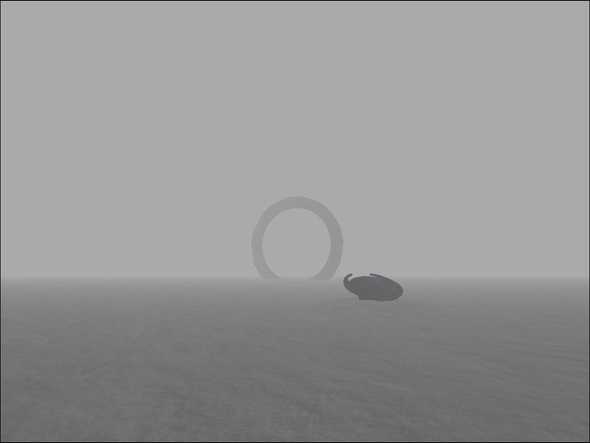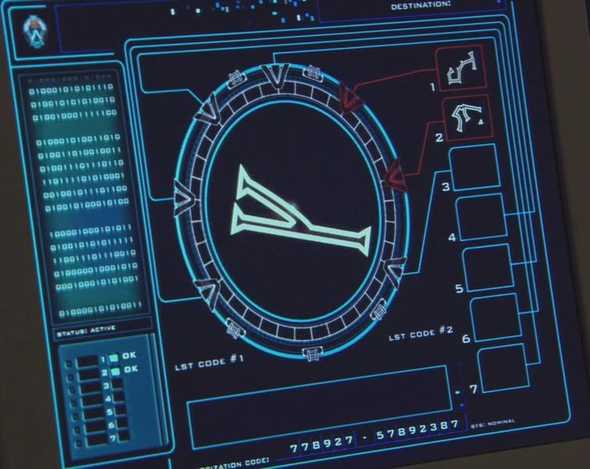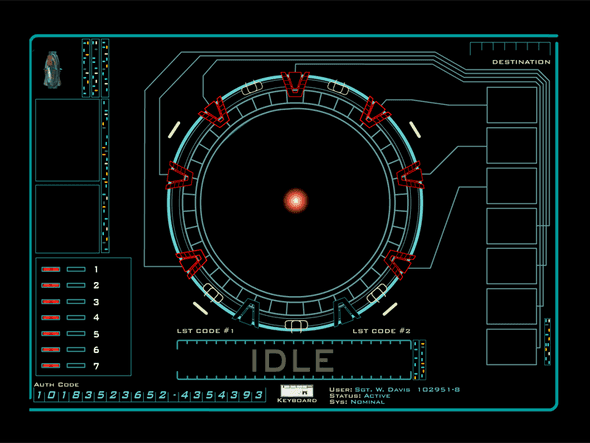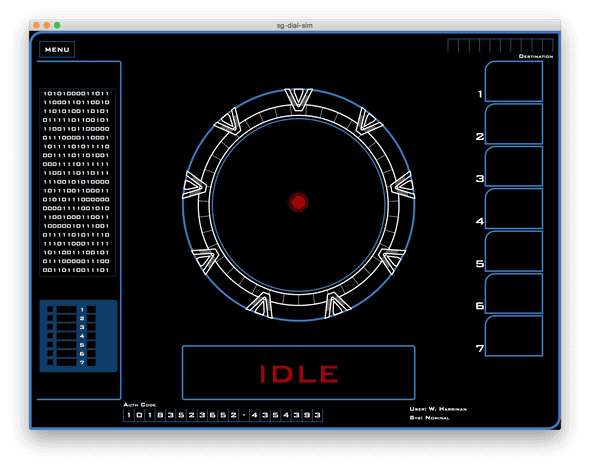A Very Special Project
December 31, 2018
As I close out the year, it feels like a good time to make the first public announcement for a special project I’ve been working on since the spring. But to really appreciate why it’s so special, one first has to know the backstory.
Background
 The first Stargate map I ever downloaded for Jedi Academy.
The first Stargate map I ever downloaded for Jedi Academy.
When I was a kid, I was a big fan of Star Wars Jedi Knight: Jedi Academy, a PC game with a huge, vibrant modding community that produced a large number of highly detailed multiplayer maps. It was through those maps that I was first introduced to the universe of Stargate, a science fiction franchise about military teams that travel to other planets by means of an ancient alien portal. The television show Stargate SG-1, and eventually spin-off series Stargate Atlantis, became a major part of my teenage years.
 The dialing computer as seen in later seasons of Stargate SG-1.
The dialing computer as seen in later seasons of Stargate SG-1.
As a young tech enthusiast, I was particularly fond of the dialing computer used by Stargate Command in the show. The computer program was built to control the Stargate in the absence of the standard alien dialing device. At the time, there were a few downloadable dialing computer simulators created by skilled members of the Stargate fan base, mostly built with Adobe Flash. I very much enjoyed playing with those simulators, but they tended to not be very customizable, and they weren’t open source so there wasn’t much I could do about that.
 SGCSim, the most prominent of the 2000s-era Flash simulators, based on the dialing computer used during the middle of the show’s original run.
SGCSim, the most prominent of the 2000s-era Flash simulators, based on the dialing computer used during the middle of the show’s original run.
All of this made me very much want to develop my own dialing computer simulator, so that I could fine-tune the experience to be as flexible as I wanted. But I was just getting started with some limited .NET development, and I never managed to build rich animated experiences with the technology of the day. I just didn’t have the skill necessary to put together a convincing recreation of the dialing computer.
Until now.
Introducing SG Dial Sim
Earlier this year, a coworker introduced me to GreenSock, a JavaScript library born out of the Flash ecosystem. GreenSock opened up a whole new world for me, giving me a way to leverage my existing web development skills to build complex animated apps for the first time. SG Dial Sim is planned to be the realization of my decade-old dream of a realistic and customizable dialing computer suitable for both decoration and role-playing.
 SG Dial Sim 0.1.0 idling in windowed mode on macOS.
SG Dial Sim 0.1.0 idling in windowed mode on macOS.
Unlike the simulators from the 2000s, this one is open source, released under the MIT License. And it’s not built in Flash; it’s an Electron app, with an underlying tech stack similar to what you might find under the hood of a modern interactive web site. It’s built to work with different screen sizes, with the goal of providing the same realistic experience on both the 4:3 monitors from the Stargate SG-1 era, and more recent 16:9 and 16:10 widescreen monitors and laptop screens. The graphics are based largely on the late-seasons dialing computer, though I took creative license to mix in elements from earlier versions, since not every possible part of the program is shown on-screen for every iteration of the software that was in the show.
It’s not customizable just yet, because what I’m announcing today is just the first preview of this project. You can load it up and dial the gate, but not much else. The first stage of the project was just getting this basic functionality in place, but much more functionality is planned for the future.
At some point, I’ll probably set up a proper website for this project. For now, you can find it on GitHub and any downloadable versions will be on the Releases page.
Philip Fulgham is a software engineer who builds web applications. Visit this website's front page to learn more.